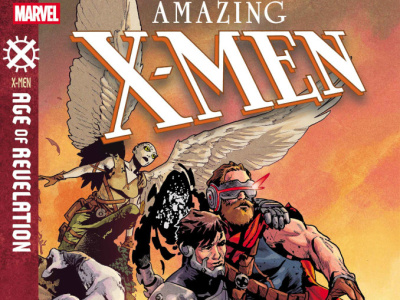
It’s been looking to us for some time like the book chains have cut back their inventory on manga to the point where they’re vulnerable to competition, so this past weekend, we used our just-invented “Naruto Index” to compare how major book retailers were doing on manga, and the results were instructive. We checked the number of volumes of Naruto, Viz Media’s #1 manga series, in stock at Borders and Barnes & Noble stores in
There are 47 volumes of the Naruto manga in print and available at Amazon, giving it a Naruto Index of 100%. In years past, Borders and Barnes & Noble stores were often in stock on all but a handful of volumes on lengthy manga series. But that’s not the case now. Despite the fact that Naruto is presumably the highest priority manga series, with the biggest sales in the category, the two big book chains were out of stock on a fairly high percentage of titles.
A couple of years ago, Borders Group was the #1 manga retailer in the
It’s worth noting that the Borders store had solid cross-category merchandising surrounding its manga, with manga merchandise facing the manga shelves from one direction and anime from the other.
Barnes & Noble has weathered the recent economic downturn more successfully than its smaller competitor. It doesn’t have the leverage problems that Borders has and is more profitable. But its Naruto index was also lower than it would have been in the past: 39/47, or 83%.
Comic stores and other independent retailers have cut back on manga space over the past couple of years due to declining sales amid tough competition from the book chains. Not only do new manga volumes often reach the book channel before they reach comic stores, the past efficiency of book chain inventory management made competition on selection difficult. But it now appears that the book chains can be beat on manga selection, and careful sourcing can minimize the time differential on new manga volumes. This may create an opportunity for independent retailers to claim a greater share of the manga business.
There are some similarities with the dynamic in the anime business, where Best Buy has cut back the number of anime SKUs it’s carrying dramatically from the peak a couple of years ago. With fewer places to buy a broad selection of anime titles, it may be that full price independent retailers have a chance to take back share in that business as well.
Of course, both anime and manga are smaller markets than they were a couple of years ago, and both markets are going through digital transformations with uncertain outcomes. E-commerce retailers have also taken share in both businesses in recent years. But there are still substantial numbers of anime DVDs sold every year, and even more manga volumes. And with the markets now niche-ier than they’ve been for several years, it may be possible for independent brick and mortar retailers to take back share; after all, serving niche markets is what they’re all about.







